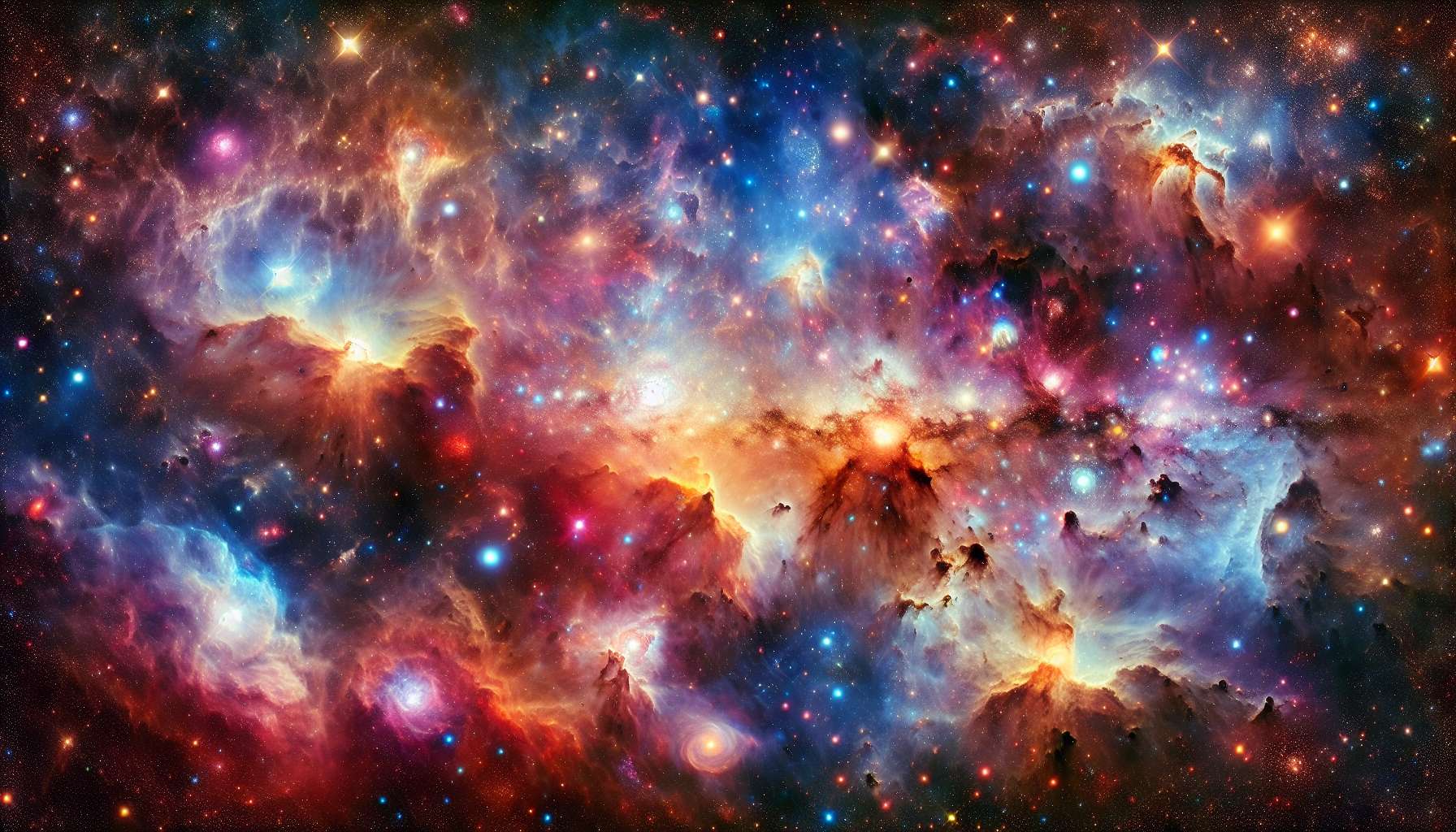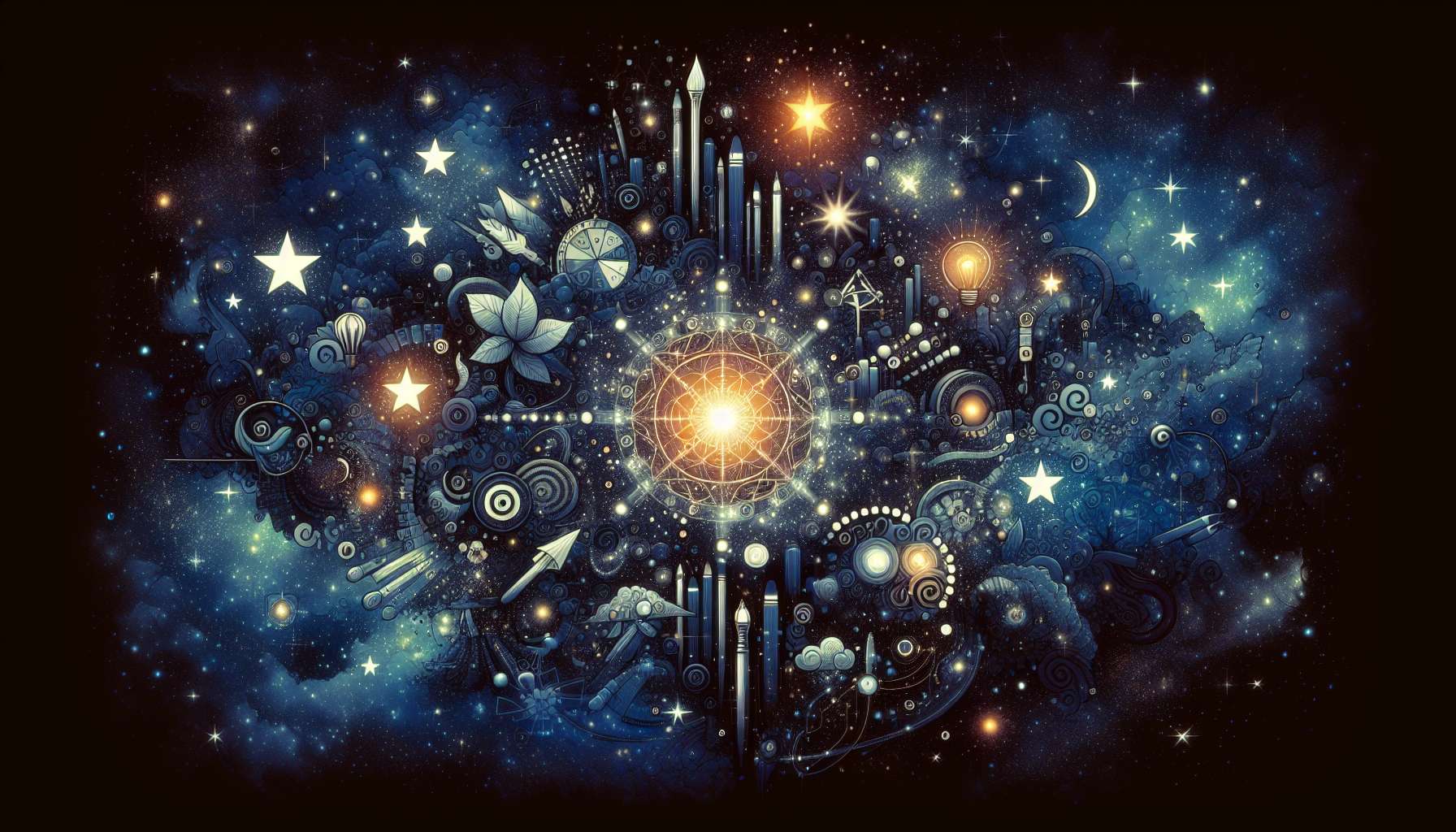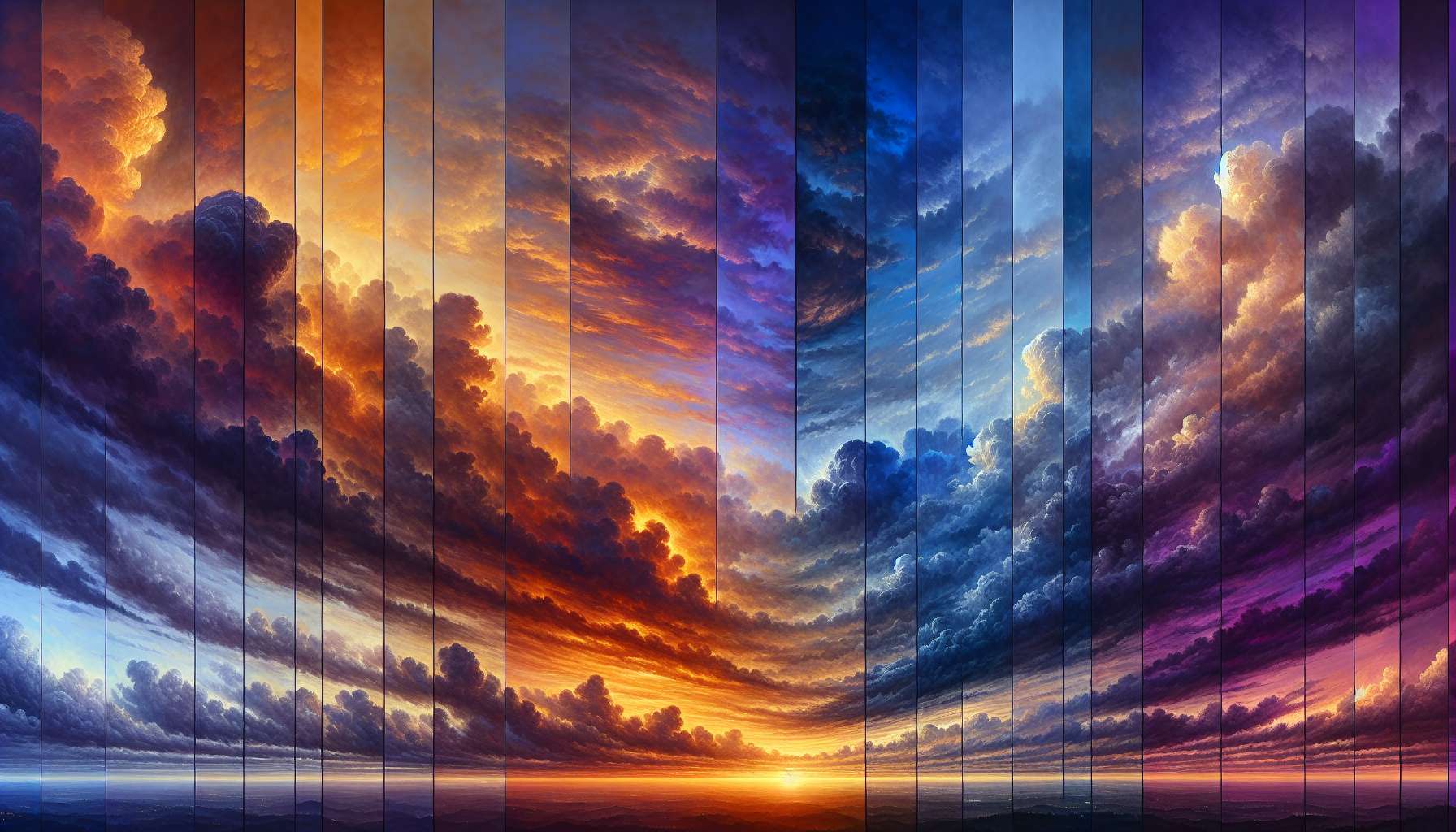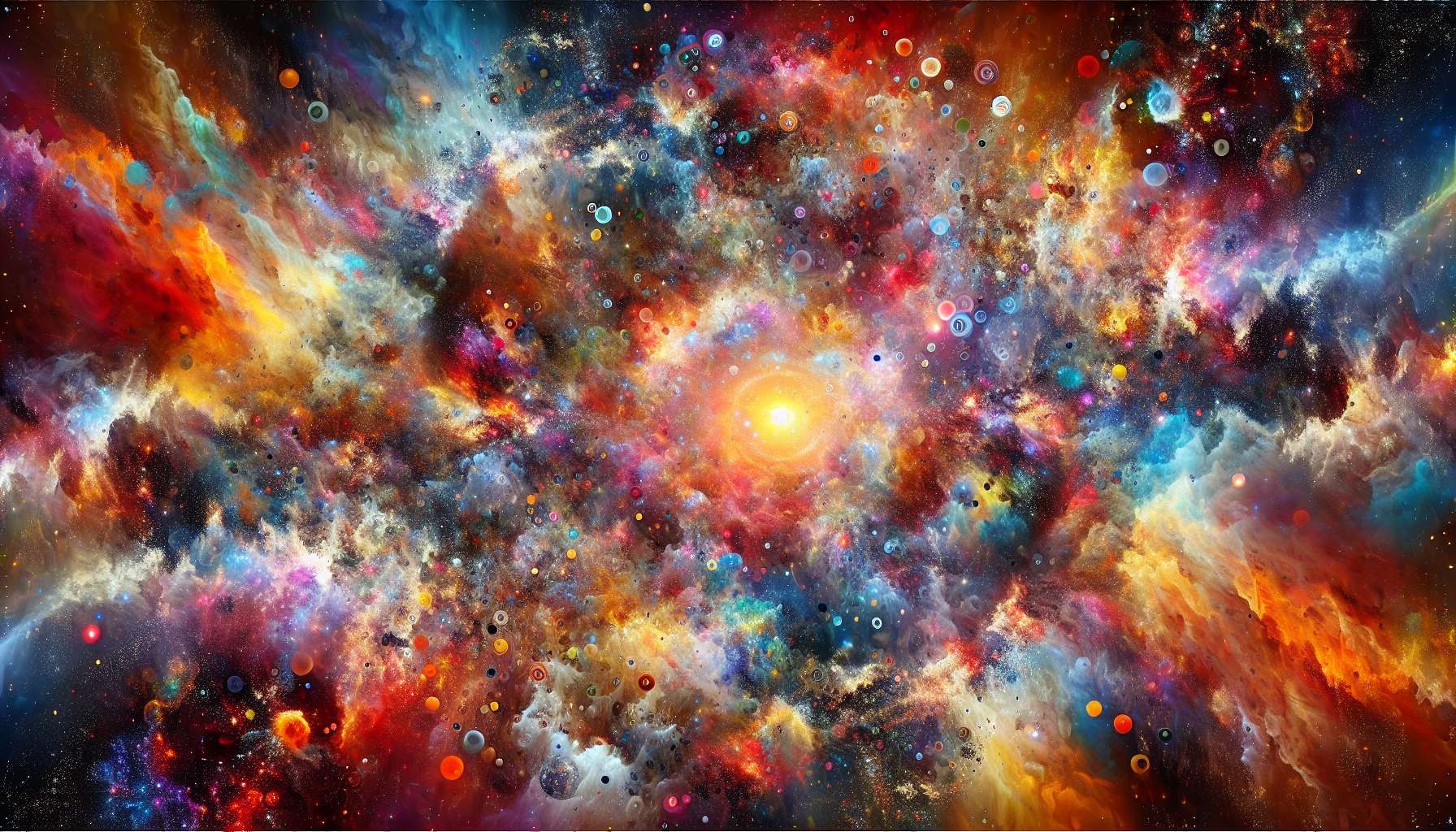Celestial Color Spectrum Studies: Exploring the Colors of the Universe
Have you ever looked up at the night sky and wondered about the colors of the stars and galaxies that shine above us? Celestial color spectrum studies delve into the fascinating world of colors in space, shedding light on the diverse hues that paint the universe. From the red giants to the blue supernovae, each celestial body tells a unique story through its distinct color palette. Join us on a journey through the cosmic rainbow as we explore the science, history, and implications of celestial color spectrum studies.
The Science of Celestial Colors
When we observe celestial objects through telescopes or satellites, we can analyze the light they emit and break it down into its constituent colors. This process, known as spectroscopy, allows scientists to study the chemical composition, temperature, and motion of stars, galaxies, and other cosmic entities. The colors we see in space are not just random; they carry valuable information about the nature and behavior of these celestial bodies.
For example, hot stars emit blue light, while cooler stars appear red. This color difference is due to the temperature of the star’s surface, with blue stars being much hotter than red stars. By studying the color spectrum of a star, astronomers can determine its age, size, and stage of evolution. The colors of galaxies also vary, indicating their age, distance, and composition. Some galaxies appear blue due to the presence of young, hot stars, while others appear red from the light of older, cooler stars.
Furthermore, celestial color spectrum studies extend beyond visible light into other parts of the electromagnetic spectrum, such as infrared and ultraviolet. By observing different wavelengths of light, scientists can uncover hidden details about the universe that are invisible to the naked eye. For instance, infrared observations reveal the presence of dust clouds, while ultraviolet light exposes energetic processes like star formation and black hole activity.
Historical Perspectives on Celestial Colors
The study of celestial colors dates back centuries, with ancient civilizations like the Egyptians, Greeks, and Babylonians making observations of the night sky. These early astronomers noted the colors of stars and planets, associating them with mythical beings and deities. In medieval times, the concept of celestial spheres and crystalline heavens influenced the understanding of color in the cosmos, linking it to divine order and harmony.
One of the most significant contributions to celestial color spectrum studies came from Sir Isaac Newton in the 17th century. Newton’s experiments with prisms led to the discovery of the visible spectrum of light, demonstrating that white light could be split into its component colors. This groundbreaking work laid the foundation for modern spectroscopy and our understanding of the colors of the universe.
In the 19th and 20th centuries, advancements in technology, such as the development of telescopes and spectrographs, revolutionized the field of astronomy. Scientists like William Huggins and Annie Jump Cannon used spectroscopy to analyze the colors of stars and classify them based on their spectral characteristics. Their work paved the way for the color-based classification of stars, known as the spectral sequence.
Applications of Celestial Color Spectrum Studies
The insights gained from celestial color spectrum studies have numerous practical applications in astronomy and astrophysics. By analyzing the colors of stars and galaxies, scientists can determine their distance from Earth, calculate their luminosity, and study their chemical composition. This information is essential for understanding the formation and evolution of galaxies, as well as predicting the behavior of celestial objects.
One of the key applications of celestial color spectrum studies is in the identification of exoplanets, or planets outside our solar system. When a planet transits in front of its host star, it causes a slight dimming of the star’s light, known as a transit. By analyzing the change in color and intensity of the star’s light during a transit, astronomers can infer the presence of an exoplanet and characterize its properties, such as size, orbit, and atmosphere.
Celestial color spectrum studies also play a crucial role in the search for extraterrestrial life. By analyzing the colors of exoplanet atmospheres, scientists can detect the presence of molecules like water, methane, and oxygen, which are indicative of potential habitability. The study of color signatures in the light from distant stars can provide valuable insights into the conditions for life beyond Earth.
The Future of Celestial Color Spectrum Studies
As technology continues to advance, the future of celestial color spectrum studies looks promising. New telescopes and instruments, such as the James Webb Space Telescope and the Large Synoptic Survey Telescope, will enable astronomers to observe the universe in unprecedented detail and resolution. These cutting-edge tools will enhance our understanding of celestial colors and open up new avenues for research.
One exciting area of research is the study of dark matter and dark energy, two mysterious components that make up the majority of the universe. By analyzing the colors of galaxies and their motions, scientists can probe the effects of dark matter on the visible universe and investigate the nature of dark energy, which drives the accelerated expansion of the cosmos. Celestial color spectrum studies will be instrumental in unraveling these cosmic enigmas.
Another promising development is the use of artificial intelligence and machine learning algorithms to analyze vast amounts of astronomical data. By training algorithms to recognize patterns in color spectra, astronomers can automate the process of classifying stars, galaxies, and other celestial objects. This will streamline the analysis of data and accelerate the pace of discovery in the field of astronomy.
Celestial Colors in Art and Culture
Beyond the realm of science, celestial colors have inspired artists, musicians, and writers throughout history. The vivid hues of the night sky, from the deep blue of the Milky Way to the fiery red of a supernova, evoke a sense of wonder and awe that transcends scientific explanations. Artists like Vincent van Gogh and Claude Monet captured the beauty of celestial colors in their paintings, infusing their works with a sense of mystery and imagination.
In music, composers have drawn inspiration from the colors of the cosmos to create symphonies and sonatas that evoke the vastness and grandeur of the universe. Pieces like Gustav Holst’s “The Planets” and John Adams’ “Short Ride in a Fast Machine” use musical motifs and textures to convey the colors and textures of celestial objects, transporting listeners to the depths of space.
Literature and poetry also abound with references to celestial colors, weaving them into tales of love, loss, and longing. Writers like Edgar Allan Poe and H.P. Lovecraft have used the colors of the night sky to evoke a sense of mystery and foreboding, while poets like Emily Dickinson and Walt Whitman have celebrated the beauty and majesty of the cosmos in their verses.
Expert Opinions on Celestial Color Spectrum Studies
Leading astronomers and astrophysicists have expressed their excitement about the potential of celestial color spectrum studies to deepen our understanding of the universe. Dr. Neil deGrasse Tyson, renowned astrophysicist and science communicator, emphasizes the importance of spectroscopy in revealing the hidden secrets of celestial objects. According to Dr. Tyson, “The colors of the cosmos are like a cosmic code that we are just beginning to decipher, unlocking the mysteries of the universe one color at a time.”
Dr. Sara Seager, an expert in exoplanet research, highlights the role of celestial colors in the search for habitable worlds beyond our solar system. Dr. Seager states, “By studying the colors of exoplanet atmospheres, we can gain valuable insights into the conditions for life on other planets. The colors of alien worlds hold the key to unlocking the secrets of life in the universe.”
Common Misconceptions about Celestial Colors
One common misconception about celestial colors is that they are purely aesthetic and have no scientific significance. In reality, the colors of stars and galaxies provide valuable information about their physical properties, composition, and evolutionary stage. By analyzing these colors, astronomers can uncover hidden details about the universe and unravel its mysteries.
Another misconception is that the colors of celestial objects are fixed and unchanging. While some stars and galaxies may appear static in color, others exhibit variations due to processes like stellar evolution, supernova explosions, and galaxy mergers. By monitoring these changes in color over time, scientists can track the dynamic nature of the cosmos and gain new insights into its evolution.
Conclusion: Unveiling the Colors of the Cosmos
To wrap things up, celestial color spectrum studies offer a window into the vibrant and diverse palette of the universe. From the fiery reds of newborn stars to the cool blues of distant galaxies, each color tells a story of cosmic evolution and exploration. By delving into the science, history, and applications of celestial colors, we can deepen our understanding of the universe and appreciate the beauty and complexity of the cosmos.
As we continue to study the colors of the cosmos, we are reminded of the infinite wonder and mystery that surround us in the night sky. Whether through scientific inquiry, artistic expression, or cultural inspiration, celestial colors captivate our imagination and inspire us to explore the unknown realms of the universe. Let us embrace the cosmic rainbow and journey into the depths of space, where colors paint a canvas of infinite possibilities.







